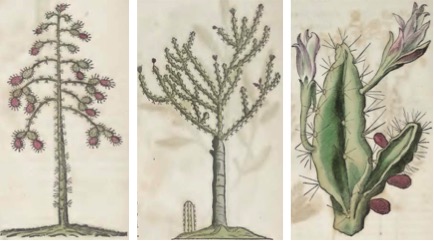
REPORTS OF KNOWLEDGE AND THE USES OF CACTACEAE SPECIES IN THE HISTORIA NATURALIS BRASILIAE (1648): COMPARATIVE PAST-PRESENT ANALYSES
Resumo
Cactaceae species have diverse uses in Brazil, principally in the northeastern region of that country, and show morphological and physiological characteristics adapted to different environments and being useful to the man as well to the animals. In general, cacti are perennial and present in all stations, and demonstrate specialized survival characteristics, and may present leaves modified to form spines, and these species are generally suculent. These plants have significant biological and ecological value in the northeastern of Brazil being present in the Caatinga environment which is characterized as an ecosystem presenting adverse environmental conditions in terms of both its climate and soils. Cactaceae are cited in the historical tome of the 17th century, Historia Naturalis Brasiliae (1648), by Piso and Marcgrave which contains one of the first considered scientific records of the Brazilian flora. In light of the singular value of this work, seven species of Cactaceae cited by those naturalists were examined in detail. It was also aimed to establish past-present timelines of Cactaceae species comparing their historic and present qualitative and quantitative uses. It was utilized as methodological path: documental, qualitative and quantitative researches. It was observed that six of the seven species described in that work are still utilized for different uses or/and conservative uses by human populations. The use-categories of Cactaceae cited in the original work and in more recently documents are: medicinal, ornamental, food resources, accessories, shade, bio-indicators, construction, magic-religious, fuel, forage, living fences, technology, and veterinary. It is remarkable that the categories medicinal, forage and living fences are cited in both past and present records. The records of Piso and Marcgrave are of significant importance in terms of understanding the temporal dynamics of the use of Cactaceae species, and the wellspring of this work ensures its continued contribution to future research in different areas.
Palavras-chave
Flora; historical ethnobotany; naturalists; northeastern Brazil; 17th century
Texto completo:
PDF (English)DOI: http://dx.doi.org/10.18542/ethnoscientia.v2i1.10191
Apontamentos
- Não há apontamentos.
Direitos autorais 2017 Ethnoscientia - Brazilian Journal of Ethnobiology and Ethnoecology













1.png)






